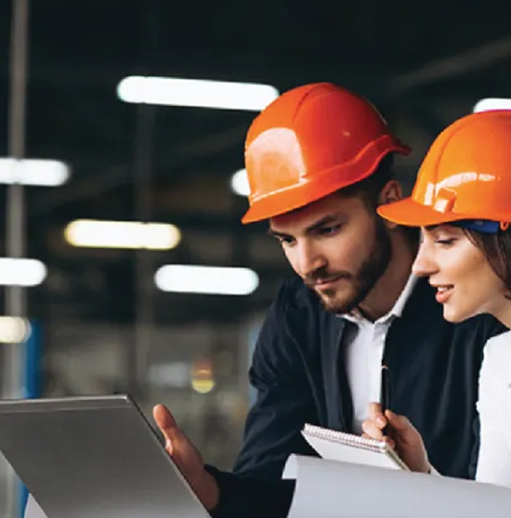
The concept of a smart workplace is easy enough to understand. It’s one that uses technology to make the lives of employees simpler and to improve the productivity and efficiency of the business. But what are smart workplace solutions, really? Solutions imply outcomes from the technology, which means looking closer at how it specifically benefits those using it. Think about it from a benefit vs. feature standpoint. How does the smart office yield improvements?
Understanding smart workplace solutions is the easiest way to close the gap between an investment in smart technologies and the ROI that justifies them. Here’s a look at some of the workplace solutions smart technologies enable.
Wayfinding, room booking, and reservations
On campuses or in large office buildings, it can be difficult to navigate. Whether it’s your first time there or you’re looking for a particular space, you need to know the best way to get to where you’re going. In a smart workplace, the solution is wayfinding software—as well as room booking and reservation software. These smart workplace solutions bridge the gap between need and solution, to make the workplace more accessible.
Malik needs a six-person workspace in Building F. He books a room using the company’s reservation system, then taps the wayfinding icon for quick directions. For added convenience, he can also calendar the reservation and directions straight to the meeting invitees. It’s an efficient solution that saves time and frustration.
This simple convenience makes the workplace more accessible and gives employees the confidence to navigate it fluidly.
Floor plan design and optimization
As workplaces continue to evolve, smart workplace management will play a bigger role in shaping the space employees need. Understanding the types of workspaces that support your employees best comes from breaking down the data provided by smart workplace tech to derive meaningful conclusions.
Leanne compiles desk booking information from the last six months. She realizes that collaborative spaces that accommodate four people are the most popular, while spaces meant for eight people see almost no use. She uses this data to reconfigure the workplace to include more four-person spaces and fewer eight-person spaces. Workspace utilization increases, according to data three months later.
Here, a data-driven approach to floor plan design and optimization ensures everyone has the right space to work.
Asset maintenance and management
Smart technologies are hugely beneficial for asset monitoring and maintenance. The ability to manage assets via a digital twin software or glean quantifiable insights from an integrated smart sensor provides facility professionals with a wide range of opportunities for improvement. Often, it’s these opportunities that transform the workplace from a smart one to an intelligent one.
Lorenzo is head of the maintenance department. He needs to provide an annual budget to the CFO, complete with any capital expenses the business should anticipate. He looks through digital twin data and finds that the rate of service calls on the roof stack heating system have gone up year over year. He also sees that the unit is eight years past its anticipated service life. He contacts a vendor for a replacement estimate, to budget accordingly.
From capital systems to smaller investments, access to data from the smart office provides a foundation for understanding the lifespan, ROI, cost of ownership, and service record of assets.
Energy efficiency and sustainability
At a time when the Triple Bottom Line is becoming more important to businesses, sustainability initiatives are on the rise. Digital workplace solutions provide the backdrop for investment in these initiatives.
XYZ Company installs rooftop solar panels. Smart sensors calculate how many kilowatts the panels generate on average each day. That data helps offset carbon energy costs, which the company can include in its annual shareholder report. It also qualifies the company for green energy tax deductions, based on the amount of power generated.
In this situation, a smart workplace solution (the shift to green energy) results in multiple benefits for the company, shareholders, and the environment. They’re justifiable and quantifiable by the smart systems that power them.
Smart systems pave the way for smart solutions
Smart workplace solutions bridge the gap between technologies and outcomes. Companies need to find ways to use the data generated by smart workplace tech to improve processes and create better outcomes. This could be as simple as using motion sensors to show room occupancy. Or, it might be as complex as observing GIS data to understand the true cost per square foot of a workplace—and if it’s justified.
There’s a whole world of smart building tech out there, but it’s useless unless applied correctly. Facility managers need to focus on solutions-driven investments as they enhance the workplace. Results beget more confidence about smart buildings, which leads to further investments and future innovation.
Keep reading: The Top Challenges for Creating Smart Buildings


